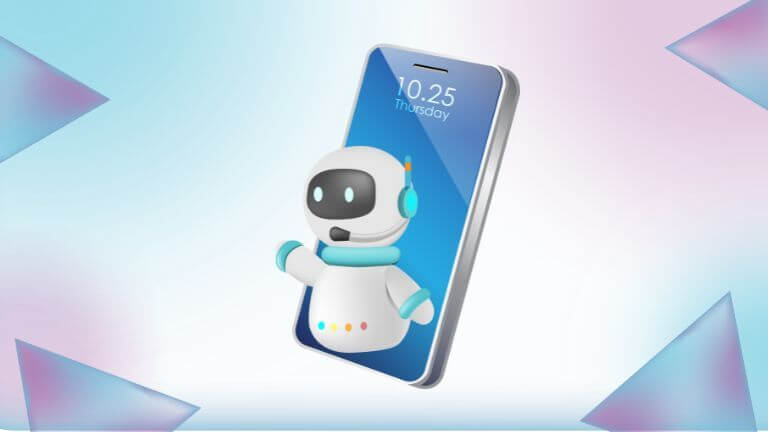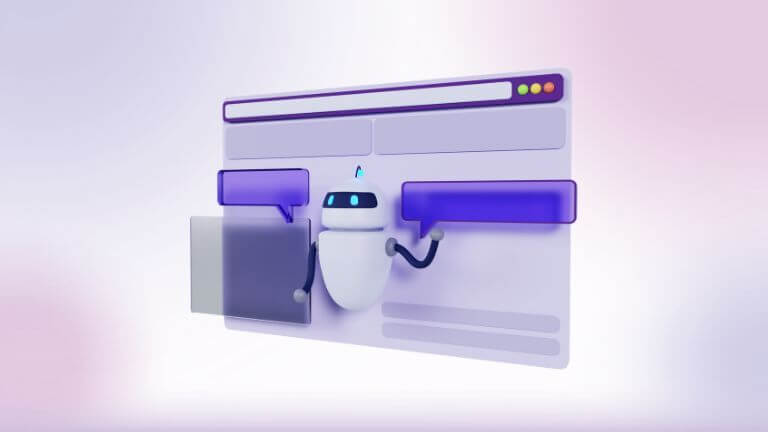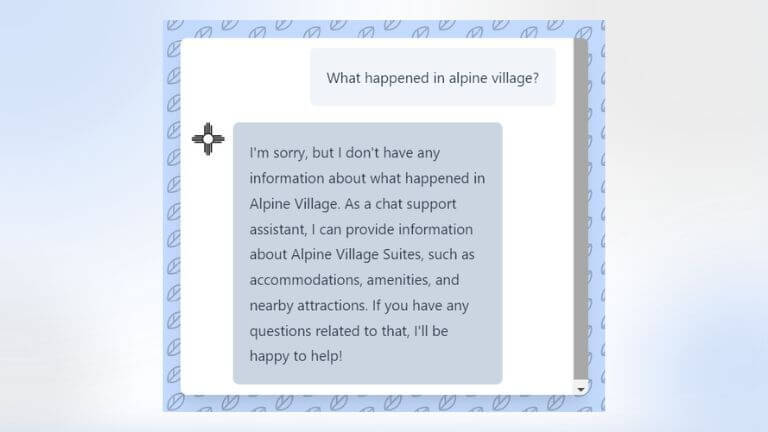
In today's fast-paced digital era, time is of the essence. Imagine a world where you don't have to wait in long queues or be put on hold for hours; instead, you get instant responses to your queries. This is the world chatbots have introduced us to, and it's no surprise they've become a sensation.
Chatbots, especially those powered by artificial intelligence (AI), have revolutionized the way businesses and individuals communicate. Take Expedia, for example. When booking a flight or hotel on Expedia, instead of navigating a complex website or waiting for a human agent, a chatbot can provide instant options based on your preferences. This efficiency not only saves time but also ensures a smoother user experience.
AI chatbots, in particular, have taken this to a whole new level. Unlike basic scripted bots, AI chatbots learn from interactions, making them more intelligent and adaptable over time. Consider the case of customer service: an AI chatbot can handle multiple queries simultaneously, 24/7, without fatigue, ensuring that customers receive timely and consistent support.
How do you make your own chatbot?
While the idea of creating a chatbot might seem like a task for tech wizards, the process is more accessible than most realize. With the right tools and guidance, even those without a technical background can craft an efficient AI chatbot. Here's a detailed guide to help you navigate this journey:
1. Choosing the Right Tool: The first step in your chatbot creation journey is selecting the appropriate platform. The market is flooded with numerous tools, each offering unique features and capabilities. Websites like Product Hunt serve as valuable resources, providing insights into the latest and most effective chatbot creation tools. Among the myriad of options, Bodt.io has emerged as a preferred choice for many. As a no-code chatbot maker, Bodt.io ensures that users, irrespective of their technical expertise, can create chatbots with ease.
2. Embarking on the Bodt.io Journey:
- Sign Up: Your journey with Bodt.io begins with a simple sign-up. Navigate to Google, search for "Bodt.io", or click here to access the platform directly.
- Onboarding: Post sign-up, you'll be ushered to the onboarding screen. This is where you'll input the foundational details for your chatbot. Key among these details is the URL of your website, which the chatbot will be tailored for.
3. Training Your Chatbot: A chatbot is only as good as its training. This phase is crucial as it determines how effectively your chatbot will interact with users.
- Data Input: Begin by feeding your chatbot with relevant data. This could range from FAQs related to your business, product details, or any other pertinent information. Bodt.io's Training Moduleprovides a structured framework for this process. Iterative Learning: As users interact with your chatbot, it's essential to continuously refine its responses. This iterative learning ensures that the chatbot remains relevant and improves over time.
4. Customizing the Chatbot: Once your chatbot is trained, the next step is to customize its appearance and functionality to align with your brand and user expectations.
- Widget Configuration: Bodt.io offers a comprehensive Configuration Guide that allows users to tweak the chatbot's appearance, response time, and other features. This ensures that the chatbot seamlessly integrates with your website's design and ethos.
5. Launching Your Chatbot: With the training and customization complete, your chatbot is ready to interact with the world.
- Embedding on Your Website: The final step involves integrating the chatbot into your website. Bodt.io's Go Live Guide provides a step-by-step process to achieve this. Once embedded, the chatbot becomes an active part of your website, ready to assist visitors 24/7.
The creation of a chatbot, while seemingly complex, is a structured and user-friendly process, especially with platforms like Bodt.io. By following the steps outlined above, businesses can harness the power of AI, enhance user experience, and streamline operations, all without the need for extensive technical knowledge.

Can I create a chatbot for free?
There are many tools out there that let you build chatbots for free. However, a common issue with these free tools is that they often lack advanced features, like AI capabilities. This means the chatbots might sometimes give answers that aren't correct.
But there's good news! If you're looking for a budget-friendly option that offers AI features, Bodt.io is a great choice. While it's not completely free, it's very affordable. For just $1, you can use their "Pay as you go" plan. With this, your chatbot can handle 100 messages and learn from 25 different web pages or documents, like PDFs.
What's special about Bodt.io is that, for this small price, you get a chatbot that uses AI. This means it can give more accurate and reliable answers compared to many free tools. In short, while there are free chatbot tools available, they might not always give the best results. If you want better accuracy without spending a lot, Bodt.io is a top choice to consider.
Are chatbots hard to make?
It might seem like a complex task, but in reality, it's quite straightforward. With platforms like Bodt.io, the process is simplified even further. By referring to their getting started guide, you can have a chatbot up and running in as little as 10 minutes. The steps are clear, user-friendly, and designed for people of all technical levels. So, if you've ever felt daunted by the idea of creating a chatbot, rest assured that with the right tools, it's an easy and quick endeavor.
Does my website need an ai chatbot?
The answer leans heavily towards a 'yes', and the reasons are manifold.
Enhanced User Experience
One of the primary advantages of integrating an AI chatbot is the significantly improved user experience it offers. Users today anticipate swift and immediate responses. AI chatbots cater to this need by providing real-time answers, ensuring that users aren't left waiting. Moreover, their adaptive learning capabilities mean they can offer highly accurate responses based on their training data. Additionally, unlike human agents who operate within specific working hours, chatbots are available 24/7, guaranteeing that users receive assistance whenever required.
Cost-Effectiveness
At first glance, AI technology might seem like a hefty investment. However, when viewed in the broader picture, chatbots are remarkably cost-effective. They can dramatically reduce expenses associated with customer support. While training and maintaining a human support team can be expensive, chatbots can manage a vast majority of standard queries, reducing the need for extensive human intervention. Furthermore, their ability to handle multiple queries simultaneously is unparalleled. For instance, a website with a traffic of 10,000 visitors might find that spending under $50 on chatbot services results in substantial savings compared to traditional support methods.
Time-Saving Benefits
Time is a precious commodity in the business world. AI chatbots shine in this aspect as well. The process to train them is considerably shorter compared to the extensive training sessions required for human agents. With the right tools and platforms, setting up and instructing a chatbot can be accomplished in just a few minutes.
Incorporating an AI chatbot into your website is more than just following a digital trend. It's a strategic move that brings tangible benefits in terms of user experience, cost, and time efficiency. If modernity, accessibility, and efficiency are on your agenda, an AI chatbot is an indispensable asset.
How much does it cost to have an AI chat bot?
The cost of integrating an AI chatbot into your website or business platform is a common concern for many. However, the answer isn't a one-size-fits-all figure. Instead, it largely hinges on factors like website traffic and the extent of chatbot usage.
Bodt offers a straightforward pricing model: $1 for every 100 AI-generated messages. These messages are not just automated responses; they are crafted based on the training done with your specific data, ensuring relevance and accuracy.
To break it down further, consider a website that receives 20,000 visitors monthly. If 5% of these visitors, which amounts to 1,000 users, interact with the AI chat support, and each of these users poses an average of 5 queries, the total number of messages generated would be 5,000. Given Bodt's pricing, this would translate to a monthly cost of $50. When you juxtapose this cost against the efficiency and 24/7 support the chatbot provides, it's evident that the return on investment is substantial.
For startups or smaller businesses with limited traffic, the cost becomes even more affordable. With a reduced number of users interacting with the chatbot, the monthly expense can drop to as low as $10. This minimal investment ensures that even budding businesses can offer their visitors a seamless and efficient support experience.
While the initial thought of integrating an AI chatbot might seem like an added expense, the value it brings in terms of efficiency, user satisfaction, and round-the-clock support makes it a worthwhile investment. With platforms like Bodt, businesses of all sizes can access this technology without breaking the bank, ensuring that they remain competitive and responsive in the digital age.
What about the AI Hallucinations, how to trust AI chat support to not spread misinformation?
Like all innovations, chatbots also come with their set of challenges. The most significant concern associated with chatbots, especially those powered by AI, is the potential to spread misinformation.
AI-driven chatbots, in particular, have a tendency known as "hallucination." In simple terms, hallucination in AI means the system might sometimes generate information that isn't based on its training data or real-world facts. This can lead to the dissemination of incorrect or misleading information, which can be detrimental, especially if the chatbot is used in critical sectors like healthcare, finance, or news.
However, not all chatbots suffer from this issue. . Proper and comprehensive training can significantly counteract the problem of AI hallucinations. By feeding the system with diverse and accurate data, and continuously refining its algorithms based on real-world feedback, the chances of the AI producing incorrect or unrelated outputs can be minimized. Bodt's chatbot stands as a testament to this approach. The team behind Bodt has invested considerable time and resources in its training phase, ensuring the chatbot is exposed to a wide range of scenarios and data sets. This rigorous training regimen has equipped Bodt's chatbot with the capability to discern and provide accurate responses, thereby substantially reducing the instances of AI hallucinations. The platform has garnered significant appreciation for its commitment to accuracy. Users and businesses alike have lauded Bodt for the reliability and precision of its responses, setting it apart in the crowded chatbot market.
Hence, while the potential for spreading misinformation is a genuine concern in the realm of chatbots, platforms like Bodt are leading the way in ensuring that users receive accurate and trustworthy information. As the technology continues to evolve, the focus on accuracy and reliability will remain paramount.

Final Thoughts
AI chatbots are no longer just fancy tools used by big brands; they've become essential for businesses of all sizes aiming to offer top-notch customer experiences. The process of creating and integrating these chatbots into websites has been simplified, making it accessible to everyone. What's even more appealing is their cost-effectiveness. While they bring a touch of advanced technology to your platform, they don't burn a hole in your pocket. In fact, they often lead to cost savings and can significantly boost revenue by enhancing user engagement. However, like all technologies, they come with challenges. The issue of AI hallucination, where chatbots might provide incorrect information, is a concern. But with proper training and by choosing reliable tools, this can be effectively addressed. In conclusion, given the myriad of benefits and the potential for enhanced customer interaction, it's worth exploring what AI chatbots can do for your business
